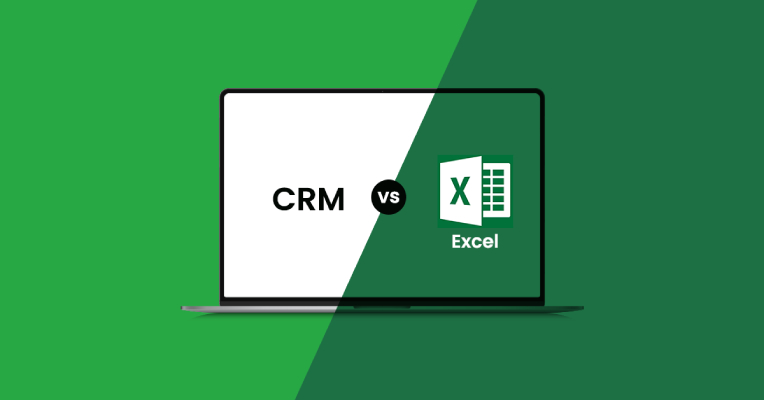For many small businesses, freelancers, and startups, spreadsheets have long been the go-to tool for managing customer data, sales pipelines, and tasks. But in 2025, relying solely on spreadsheets can be a serious bottleneck for growth. If you’re feeling overwhelmed by scattered files, manual updates, and inconsistent communication, it might be time to transition to a CRM (Customer Relationship Management) system.
In this post, we’ll explore why a CRM is superior to spreadsheets, its benefits, potential drawbacks, and how you can get started.
The Problem with Spreadsheets
Spreadsheets like Excel or Google Sheets are flexible, familiar, and easy to start with. But as your business grows, they quickly become inefficient and prone to error. Common issues include:
- Manual data entry: Time-consuming and error-prone
- Lack of automation: No triggers or workflows for follow-ups
- Version control problems: Multiple users cause confusion
- Limited collaboration: Not built for team-based sales or support
- Zero integration: Doesn’t connect seamlessly with email, marketing tools, or eCommerce platforms
What is a CRM and Why Does It Matter?
A CRM system is a software tool that helps businesses manage relationships with customers, track interactions, automate communication, and streamline sales and support workflows.
Unlike spreadsheets, CRMs offer centralized data access, automated reminders, customizable dashboards, and integration with tools you already use.
Key Benefits of Switching to a CRM
1. Centralized Customer Data
CRMs store all contact details, communications, and purchase history in one place—accessible to your whole team in real time.
2. Automation of Repetitive Tasks
Automate follow-up emails, lead assignments, and sales workflows so nothing slips through the cracks.
3. Better Collaboration
Your team can work together on accounts, share notes, and track progress without duplicating efforts.
4. Powerful Reporting and Analytics
CRMs give insights into sales performance, customer behavior, and marketing ROI—something spreadsheets struggle with.
5. Improved Customer Experience
Personalize outreach based on real-time data, increasing customer satisfaction and loyalty.
Popular CRM Platforms to Consider
HubSpot CRM
- Pros: Free tier, user-friendly, excellent marketing integration
- Cons: Limited features on free plan
Zoho CRM
- Pros: Cost-effective, customizable, integrates well with Zoho apps
- Cons: Slight learning curve for beginners
FluentCRM (WordPress users)
- Pros: Self-hosted, affordable, perfect for small businesses and bloggers
- Cons: Requires WordPress and technical setup
Salesforce
- Pros: Extremely powerful, enterprise-level tools
- Cons: High cost and complexity for small teams
Pipedrive
- Pros: Simple, visual sales pipeline, good for small sales teams
- Cons: Limited marketing features
Pros and Cons of Moving Away from Spreadsheets
Pros:
- Scalable system for managing customer data
- Automation saves time and reduces human error
- Easier collaboration among teams
- Access to advanced reporting and dashboards
Cons:
- Initial learning curve and setup time
- Subscription costs may apply
- May require team training and onboarding
How to Make the Switch
Step 1: Identify Your Needs
Outline your goals—do you need sales automation, email marketing, customer support tracking, or all of the above?
Step 2: Choose the Right CRM
Select a CRM that fits your budget, team size, and required features. Many offer free trials.
Step 3: Import Data
Most CRMs allow easy import of data from spreadsheets (CSV files), so you don’t lose your existing records.
Step 4: Train Your Team
Ensure everyone knows how to use the system effectively. Many platforms offer tutorials or onboarding support.
Step 5: Monitor and Optimize
Use your CRM’s reporting tools to track success and refine your workflows as needed.
Conclusion
If you’re tired of juggling spreadsheets, a CRM can transform your workflow, improve efficiency, and help grow your business faster.
